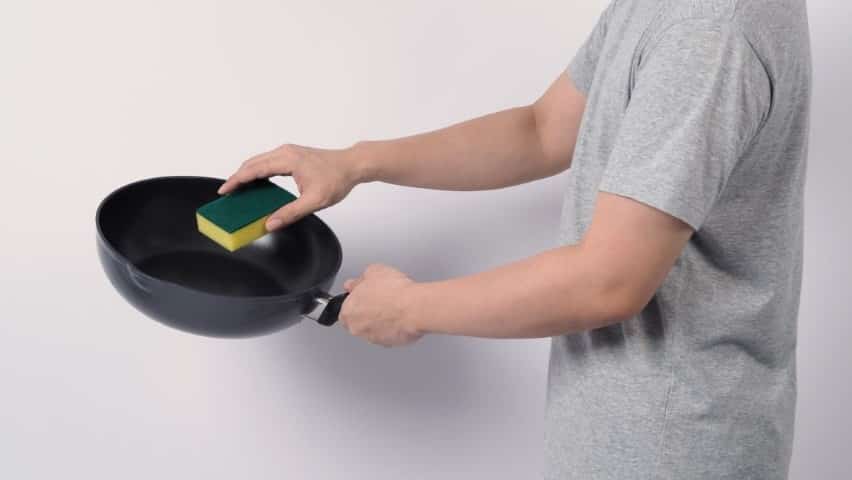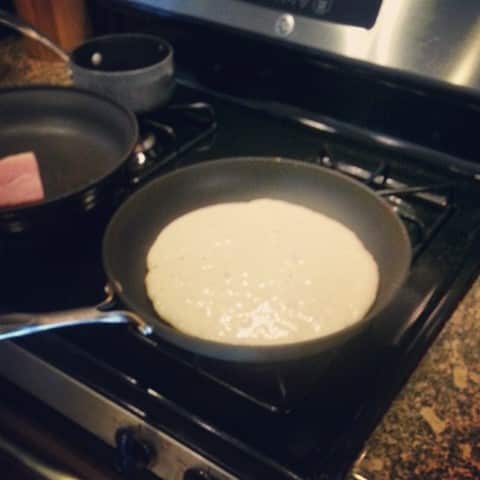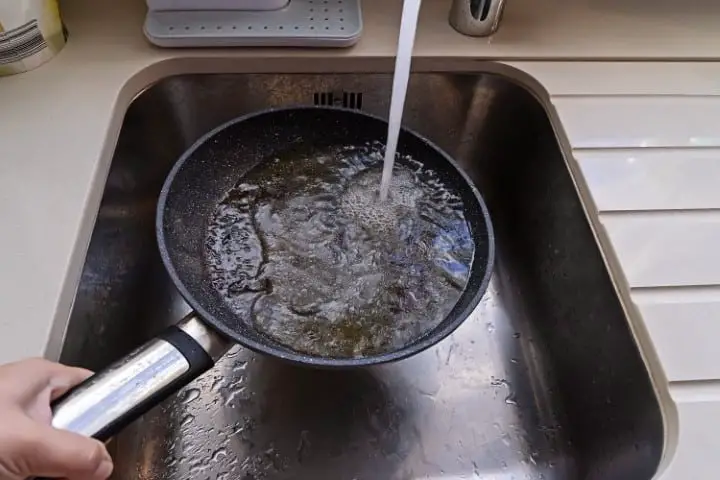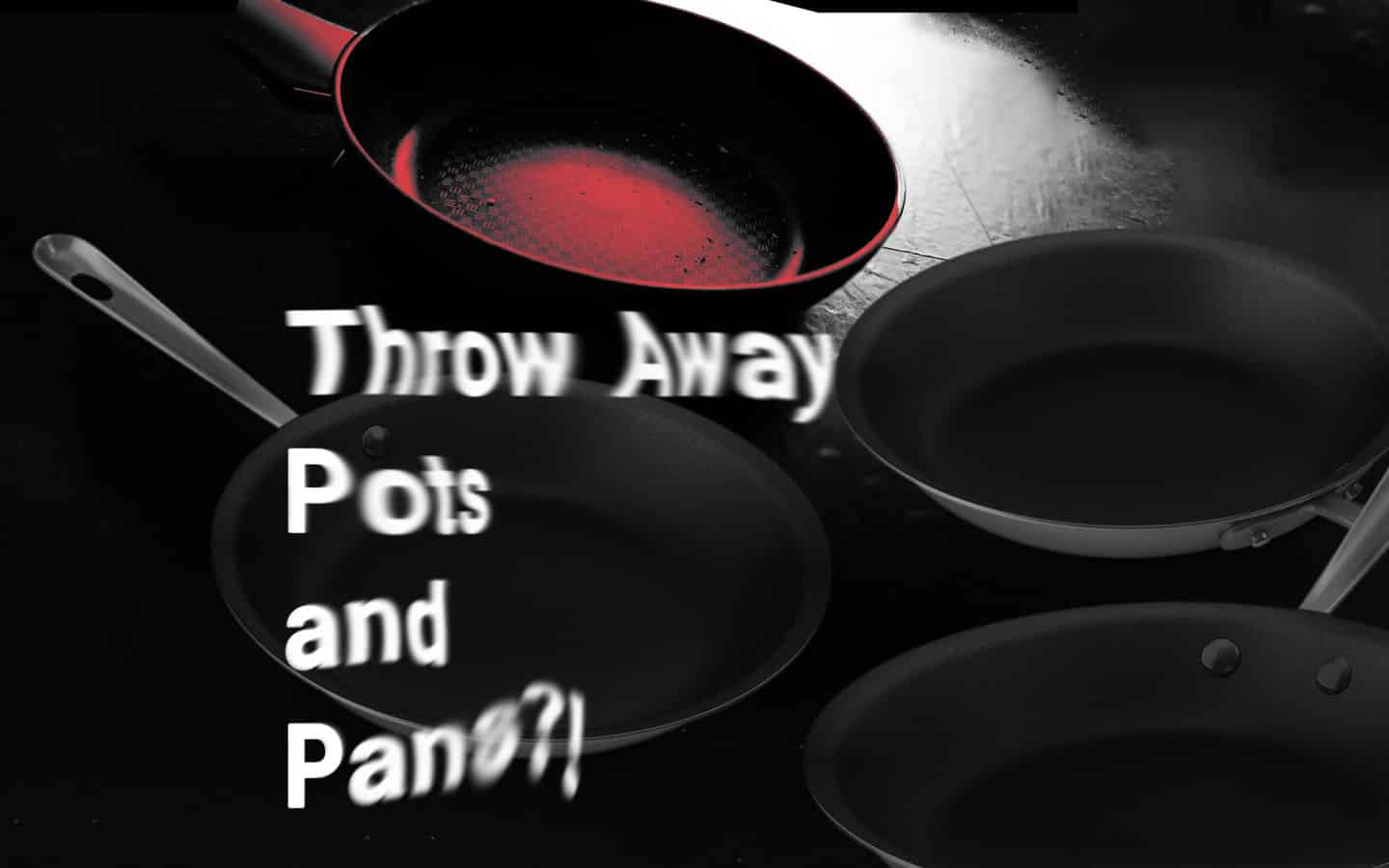I used to think pots and pans and most plastic cookware, for that matter, were nearly indestructible. However, I have learned that even though these materials may look structurally fine, there is more going on than meets the eye. I’ll tell you what I learned after doing some research about my scratched non-stick pots and pans.
Answer: The big things to look for have to do with signs of heat damage: flaking, peeling, scratching, or warping of the metal, discoloration of the pan or surface. These are clear indicators it is time to get new pans. Lastly, if your pan set was made before 2015, you will also want to toss it.
I started looking into all this back when we got our Ninja Foodi, but it turns out my wife was already on the case and had thrown out a nice-looking set of pots and pans over the concerns they raised. The thing about non-stick coatings has to do with the chemicals contained in the compounds or the chemicals used to make them.
The government banned some of these chemicals and required manufactures to remove them from their processes and coatings by 2015. The other concerns with heat have to do with how many of these chemicals react to high heat. Many experts recommend not going over 450° F. However, many of the safety sheets/datasheets from the manufacturers state safe operation up to 650° F.
If you would like to read more about these chemicals, they are polytetrafluoroethylene (PTFE) and perfluorooctanoic acid (PFOA). The exploration and details of these chemicals are far outside the scope of this blog. However, it only takes a minimal number of searches to find contradictory information from official sources such as the CDC and EPA and scholarly sources . I’m going to err on the side of caution.
. I’m going to err on the side of caution.
Maybe now you’re wondering if you should use non-stick pans at all, keep reading, and you will perhaps be able to make a better choice.

How Long Should a Nonstick Pan Last?
The promise of the non-stick would last forever; however, it is typical to find people who claim you should toss your nonstick pots and pans after only five years of use. I asked a chef who cooks omelets at a popular venue what he recommended and was told they replace their pan every eight months or so often due to the pan’s handle’s failure. He went on to say often, the nonstick surface looks fine.
Subscribe to our YouTube because, in an upcoming video, I will call and talk to some chefs about what they think regarding nonstick cookware, how long you should keep it, and potential health hazards.
because, in an upcoming video, I will call and talk to some chefs about what they think regarding nonstick cookware, how long you should keep it, and potential health hazards.
Is There a nonstick “Repair” Spray?
I admit I even fell for this when I first heard about it; I mean, we have “repair” spray for nearly everything, so I figured it had to be true but was I wrong. The people saying to use the Teflon sprays for repairing anything in your kitchen are not only wrong, but they are dangerous.
Answer: NO! There is no nonstick “repair” spray that is safe or for human consumption. If you find any blog posts stating that you can “repair” a nonstick pot or pan, they will often link to Amazon or similar products, and in big, bold letters, these listings all say, “DO NOT USE THIS TO REPAIR COOKING EQUIPMENT.”
These sprays are designed for use in machine equipment, industrial use, outdoor, and farm. They are not made to put on your pots and pans, then cook your food in them. DO NOT DO IT!
So if you can’t repair it, what should you do when the nonstick starts to give up the ghost. Mostly you need to replace any cookware that the non-stick coating shows any signs of distress but keep reading, and I’ll break it down for you.

What to do if My Nonstick Pan Gets Scratched?
The most common recommendation from manufactures is to send it in for warranty exchange, or if you are past your warranty, it is time to get a new set.
Fair warning for you many manufactures will not even warranty out scratched non-stick cookware because it will be considered unusual or harsh use. However, I have had success in getting service personal to agree to replace something over the phone. So give your manufacture’s support line a call and explain to them what happened. If you get someone nice, they will likely replace it for you.
If you are outside the warranty for your cookware, it might be time to get a new set. My wife and I have decided to use a combination of stainless and cast iron in our house. If you are wondering, yes, you can even replace the one in your Ninja Foodi; check out our resources page to see what we use.
Before you get too worried if your cookware is not scratched, but instead it is peeling or flaking, you might have better luck with that warranty exchange.

What to do if My Nonstick Coating is Coming Off my Pot or Pan?
If peeling and flaking is a problem you have started to notice on your non-stick cookware, I’m sorry, but it is time to say “bye-bye.”
DuPont and the government both say these pans are fine when they start peeling and flaking. However, I don’t think any of us want to be ingesting a chemical linked to death, cancer, and congenital disabilities.
As mentioned in the previous section, you may have luck with the warranty department, and in my experience, for peeling and flaking, you are more likely to get than replacement than with scratches.
So before you get rid of them completely, call the manufacture and see if you can get that free replacement. Otherwise, it is likely time to recycle or toss your nonstick cookware.
Last but not least, we look at what might be the most obvious time to get rid of your nonstick pots and pans.

What if my Non-Stick Cookware is Discolored or Warped?
THROW IT OUT NOW!
The number 1 sign of heat damage is discoloration, and the number 2 sign of heat damage is warping. Why is this so important?
Heat is what releases toxic chemicals and breaks down the otherwise stable chemical structure. The critical temperature to avoid is anything over about 450° F. As mentioned before, some datasheets state things will be safe to 650° F.
You can attempt warranty exchange again on these types of damage; however, I don’t think it will be guaranteed as these are clear signs of abuse.

How to Protect your Non-Stick Cookware
Ensuring your non-stick cookware lasts a long time giving you years of stick-free service takes only a little extra effort. To make things easier, I have divided this section into easy-to-follow bullet points.
- Cleaning: avoid the dishwasher, especially high heat dry modes and sanitizing cycles. Instead, hand washes with something gentle such as a light bristle dish brush, rag, or sponge. Make sure nothing is caught in your rag like sand or other debris that might scratch the surface. Never use harsh scrubbers, brillo(style) pads, or steel wool. Never use abrasive cleaners.
- Bonus tip: ensure when your dishes are waiting to be washed, no utensils or other items are placed where they can touch the non-stick surface
- During Use: Mind the heat. You don’t want to go over 450° F, and this can be especially important to realize some stoves will get hotter over a long enough period of time if left unattended. Avoid using metal utensils instead, and you should use nylon or silicon for your nonstick cookware. Additionally, the very rare recipe or utensil is stone, and this would be an absolute no-no for your nonstick surfaces.
- Storage: do not stack your nonstick cookware. They are not storage bins, and anything you put inside of them has the potential to scratch them or act as a force that might allow a small bit of abrasive dust or other particles the chance to scratch your surfaces. One way to do this is to store the cookware with the lids on and nothing inside.
Now that you have some basic guidelines to follow to help your cookware last longer, you might want to hear about some of the things I have seen happen to lead to the destruction of many a nonstick surface.

Examples of What Not to Do…
I’ve seen it over and over again. People know a pan as a pan and are apt to throw it in the sink and let all utensils and other things land or sit inside while waiting for washing. Then others insist that non-stick somehow means indestructible and will grab the first stainless still spatula their hands can reach to scrape the bottom of their pan.
I have seen other things with my own eyes or even done myself include leaving the stove on long enough to burn the food inside and the pan and cooking over an open flame in a fire pit. I hate to admit it, but I wasn’t thinking and stored some pans in the oven when I was younger. Later, when I preheated the oven to cook something, I was treated to a funky smell and a lot of smoke.


